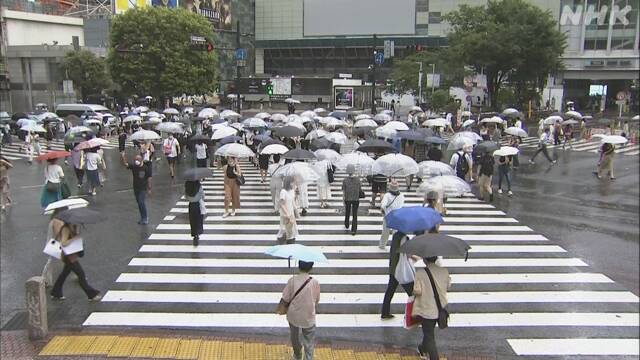The number of people in Tokyo on the 30th, when the state of emergency was decided to be extended, has increased both during the day and at night compared to the weekday average during the period when the third declaration was issued before the opening of the Olympic Games.
NHK used mobile phone location data collected by IT-related company Agoop with the permission of users in a non-personally identifiable manner to determine the number of people at major locations.
The survey time is from 6 am to 6 pm during the day and from 6 pm to midnight the next day at night.
First, comparing the number of people on the 30th in Tokyo, where the extension of the fourth state of emergency was decided, with the average of weekdays from April 25th to the 20th of last month, when the third declaration was issued,
▽ Near the Shibuya Scramble crossing, it
increased by
18% during the day and 13% at night, and
▽ Near Tokyo Station, it increased by 2% during the day and 8% at night.
Compared to a week before the Olympics began,
▽ near the Shibuya Scramble crossing decreased by 7% during the day and 6% at night, while
▽ near Tokyo Station
decreased by
48% during the day and 2 at night. It increased by a factor of 2 (105%).
On the other hand, in Saitama, Chiba, Kanagawa, and Osaka, which will be added to the target areas of the emergency declaration from the 2nd of next month,
▽ 37% in the daytime, 98% in the nighttime,
▽ Chiba
near Omiya station
compared to one week ago.
41% during the day and 2.2 times (122%) at night
near the station
,
▽ 3% during the day and 36% at night near Yokohama Station,
▽ 3% during the day and 13 at night near Osaka Umeda Station % Increased respectively.
In Okinawa, where the extension of the state of emergency has been decided, it has
increased by 2.3 times (138%) during the day and 50% at night near the prefectural office station in Naha city
compared to a week ago
.

